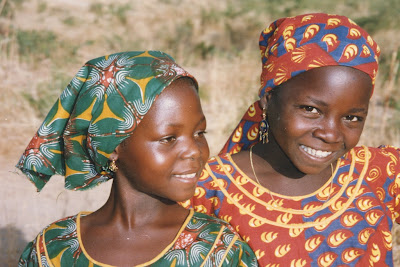Sudan
Where South Africa rates a bit higher than the average Sub-Saharan country, Sudan rates significantly lower. Terrorized by internal conflict, Sudan’s rates are, however, not incredibly unusual. Several other countries currently suffer similar tragedies. And of course, Sudan’s schools are not safe from the terror of this in-fighting: “A UNICEF survey in Tawila documents a large number of rape cases, in one case targeting 41 school girls and teachers, and the gang rape of minors by up to 14 men” (Geneva Centre for Democratic Control of Armed Forces, 2007). This kind of disgusting intrusion is, unfortunately, not uncommon. As a result of this and other difficult factors, school enrolment rates don’t run high. Primary enrolment, as a percentage of the total number of children of primary school age is 60, and male/female: 64/56, while secondary enrolment drops to 34/32 (UNFPA, 2006).
Resulting from this the terrible conflict, its horrifying conditions, and a universal lack of significant education, maternal health is suffering immensely. For every 1,000 live births in Sudan, 590 die (UNFPA, 2006). That’s 59% of Sudan’s mothers. Not only is this a tragedy for these young mothers, but undoubtedly their infant children and families are suffering as well. These tragic and unnecessary deaths occur as a result of lack of materials, trained midwives and doctors, necessary instruments and equipment, first aid items, outreach services, among many other lacking necessities (UN, 1999).
Unsurprisingly, HIV is completely rampant in war-torn Sudan. Ravaged by the “systematic rape of black women,” victims have been informed, “I want to dilute your blood” (Grice, 2007). Not only are locals being slaughtered, but a “second wave of genocide” is occurring as women are raped, develop HIV-AIDS, and then cannot “get the drugs to treat the disease.” (Grice). And even those who might be able to obtain treatment often choose not to, as “women and girls in Darfur are so reluctant to report rape that unless serious injuries are sustained they would rather not seek medical help” (UN Office for the Coordination of Humanitarian Affairs, 2008). Naturally, many women never learn of their HIV-infection until it is too late. And infection is becoming worse and worse, especially since Sudan is a country where female genital mutilation, or circumcision, still occurs regularly. This mutilation increases the probability of infection, because of either unsterilized tools during circumcision, or from “being exposed to tearing or injury during sexual intercourse, which leads to bleeding and increases the capacity of transmitting the virus” (United Nations Development Programme, 2005). As a result, 56% of total AIDS cases are women, and 2.6% of the total population is infected with AIDS (CIA, 2003). Of course, this statistic was given nearly 6 years ago, and has undoubtedly risen significantly as systematic rape has sky-rocketed. And certainly these women and children are not benefiting from their lack of education, which could perhaps have saved them from waiting for treatment until it is too late.
Children’s Health Status
Children are fairing slightly better than their mothers, but not by much. There are about 91 deaths per 1,000 live births in Sudan (CIA, 2007). The under-5 mortality rate is worse, with 113 deaths per 1,000 births for both male and female infants (UNFPA, 2006). Only 1% of these infants are breastfed exclusively at 6 months (LAH, 2003). This unnecessary misfortune likely results from either lack of education for these new mothers, or the fact that, as we learned above, many of the mothers are dead.



